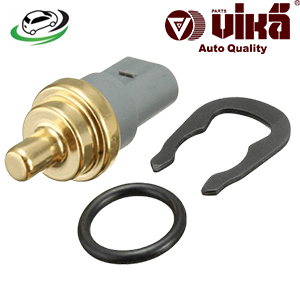-15%
Get Engine Oil Filter Gasket Seal Audi A8 2004-2007/Audi A8 2008-2010/Audi Q5 2009-2012/Audi A6/S6/Avant qu. 2009-2011 / VW Touareg 2003-2012 059115441K
The engine oil filter gasket seal is a vital component in a vehicle’s engine oil filtration system. It ensures a leak-free connection between the oil filter and the engine, maintaining proper oil circulation and pressure. This comprehensive guide covers the function, types, benefits, maintenance, and common issues associated with engine oil filter gasket seals.
Function of an Engine Oil Filter Gasket Seal
Sealing the Oil Filter
The primary function of the engine oil filter gasket seal is to provide a secure, leak-proof seal between the oil filter and the engine block. This ensures that the oil filter stays in place and prevents oil from leaking out of the connection.
Maintaining Oil Pressure
A proper seal is crucial for maintaining the correct oil pressure within the engine. Leaks can lead to a drop in oil pressure, which can result in inadequate lubrication and potential engine damage.
Ensuring Efficient Filtration
By preventing oil leaks, the gasket seal ensures that all the oil passes through the filter before circulating back into the engine. This is essential for removing contaminants and maintaining clean oil for engine lubrication.
Types of Engine Oil Filter Gasket Seals
- Rubber Gaskets
- Construction: Made from high-quality rubber.
- Advantages: Provides a flexible and effective seal, cost-effective.
- Disadvantages: Can degrade over time due to heat and exposure to oil.
- Silicone Gaskets
- Construction: Made from durable silicone material.
- Advantages: Excellent resistance to heat and oil, longer lifespan.
- Disadvantages: More expensive than rubber gaskets.
- Metal Gaskets
- Construction: Made from metal, often with a rubber or silicone coating.
- Advantages: Provides a strong and durable seal, resistant to high pressure and temperature.
- Disadvantages: Can be more difficult to install, higher cost.
- Composite Gaskets
- Construction: Made from a combination of materials, such as rubber and metal.
- Advantages: Offers the benefits of multiple materials, providing a strong and flexible seal.
- Disadvantages: More complex manufacturing process, higher cost.
Benefits of High-Quality Engine Oil Filter Gasket Seals
Preventing Oil Leaks
High-quality gasket seals effectively prevent oil leaks, ensuring that the engine oil stays within the lubrication system. This helps maintain the correct oil level and pressure, crucial for engine performance and longevity.
Enhancing Engine Performance
By ensuring a leak-free connection, high-quality gasket seals help maintain consistent oil pressure and flow, leading to better engine performance and efficiency. This results in smoother operation and improved fuel economy.
Extending Engine Life
A reliable gasket seal prevents contaminants from entering the engine oil, ensuring that the oil filter can effectively remove impurities. Clean oil reduces wear and tear on engine components, extending the engine’s lifespan.
Reducing Maintenance Costs
Using high-quality gasket seals reduces the likelihood of oil leaks and associated engine damage, leading to fewer repairs and lower maintenance costs over time.
Ensuring Safety
Oil leaks can pose a safety hazard, as oil on the road or engine components can increase the risk of accidents or fires. High-quality gasket seals help mitigate these risks by maintaining a secure oil seal.
Maintenance of Engine Oil Filter Gasket Seals
Regular Inspection
- Visual Checks: Regularly inspect the oil filter and gasket seal for signs of leaks, wear, or damage. Look for oil residue around the filter area.
- Performance Monitoring: Pay attention to any changes in engine performance, such as drops in oil pressure or unusual engine noises, which can indicate a gasket seal issue.
Replacement Intervals
- Oil Change Routine: It is typically recommended to replace the oil filter and gasket seal during each oil change. This ensures that the gasket remains in good condition and prevents potential leaks.
- Manufacturer’s Guidelines: Follow the vehicle manufacturer’s guidelines for oil filter and gasket seal replacement intervals.
Proper Installation
- Ensure Clean Surfaces: When installing a new oil filter and gasket seal, ensure that the mounting surfaces are clean and free from old gasket material or debris.
- Lubricate the Gasket: Apply a thin layer of clean engine oil to the new gasket before installation. This helps ensure a proper seal and makes it easier to remove the filter during the next oil change.
- Tighten Correctly: Follow the manufacturer’s instructions for tightening the oil filter. Over-tightening can damage the gasket, while under-tightening can lead to leaks.
Common Issues with Engine Oil Filter Gasket Seals
Leaks and Seepage
- Symptoms: Oil residue around the filter, drops in oil level, oil spots under the vehicle.
- Causes: Worn, damaged, or improperly installed gasket seals can lead to leaks. Using an incorrect gasket type or size can also cause sealing issues.
Degradation and Wear
- Symptoms: Cracks, hardening, or deformation of the gasket.
- Causes: Exposure to heat, oil, and pressure over time can cause rubber gaskets to degrade. Using low-quality materials can also result in premature wear.
Improper Installation
- Symptoms: Oil leaks, difficulty in tightening or removing the filter.
- Causes: Not cleaning the mounting surfaces, failing to lubricate the gasket, or over-tightening the filter can lead to sealing problems.
Contamination
- Symptoms: Reduced oil pressure, poor engine performance, increased engine wear.
- Causes: Damaged or leaking gaskets can allow contaminants to enter the oil system, reducing filtration efficiency and causing engine issues.
Replacement of Engine Oil Filter Gasket Seals
Tools and Equipment
- Basic Tools: Oil filter wrench, drain pan, clean rags.
- Replacement Gasket Seal: Ensure the new gasket seal is compatible with your vehicle’s oil filter.
- Engine Oil: Fresh engine oil for lubricating the new gasket and topping off the oil level.
Steps for Replacement
- Safety First: Park the vehicle on a level surface and ensure the engine is turned off. Allow the engine to cool if it has been running.
- Drain the Oil: Place a drain pan under the oil drain plug and remove the plug to drain the engine oil.
- Remove the Old Filter: Use an oil filter wrench to remove the old oil filter. Be prepared for some oil to spill out as the filter is removed.
- Inspect and Clean: Inspect the old gasket seal and the mounting surface for any debris or old gasket material. Clean the surface thoroughly.
- Prepare the New Filter and Gasket: Apply a thin layer of fresh engine oil to the new gasket seal. This helps ensure a proper seal and makes it easier to remove the filter later.
- Install the New Filter: Screw the new oil filter onto the mounting surface by hand. Follow the manufacturer’s instructions for tightening, typically ¾ to one full turn after the gasket makes contact with the surface.
- Refill the Oil: Replace the drain plug and refill the engine with the recommended type and amount of engine oil.
- Check for Leaks: Start the engine and let it run for a few minutes. Check for any oil leaks around the filter area.
- Dispose of Old Oil and Filter: Properly dispose of the used oil and old filter according to local regulations.
Professional Assistance
If you are unfamiliar with vehicle maintenance or the replacement process, it is advisable to seek professional assistance to ensure proper installation and avoid potential issues.
Follow us on Facebook for more parts.





